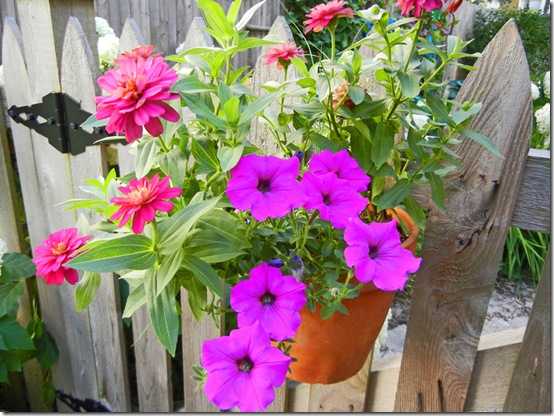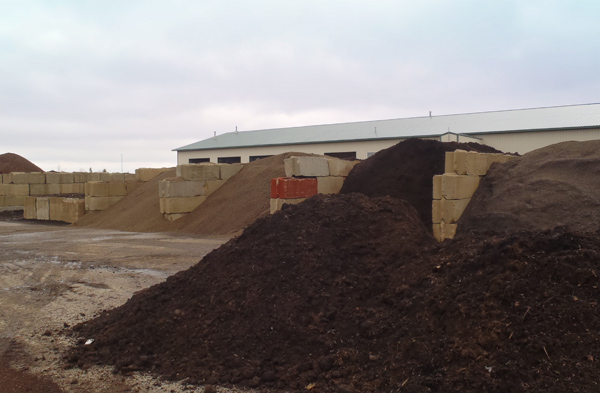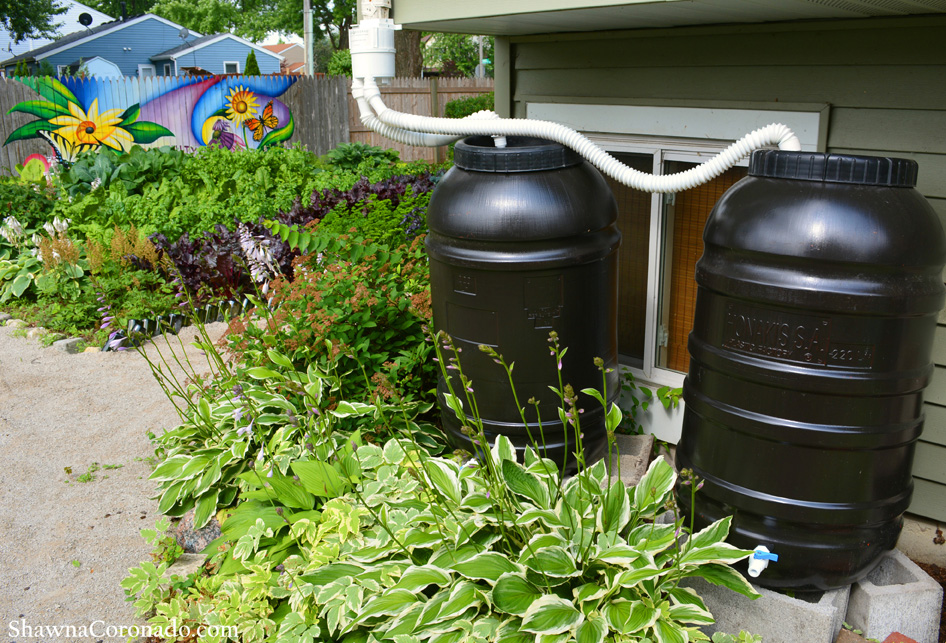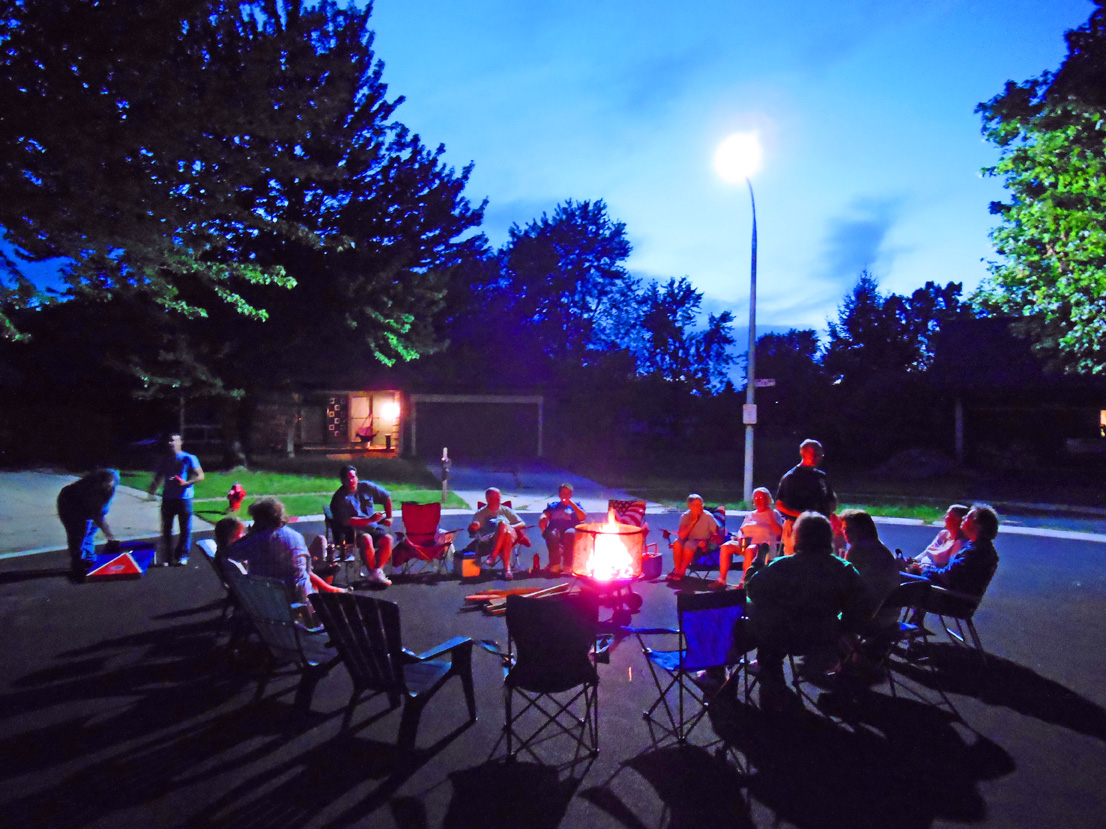Container Garden Dry Out – Secret Tips To Save Plants and Save Money
Big box stores tout that they will save you money and time by grouping annual flowers together in the same container garden. At the store it is a beautiful display, so the idea seems valid. However, within a day of bringing the planted container home, it dries out like the Sahara Desert and I spend the rest of the spring and summer watering it EVERY DAY. This is not sustainable and does not save time or money.
The reason you have to water so much is the plant is usually planted in a soilless mix so the nurseries can water and fertilize more often without the roots rotting in the humid nursery conditions. Once you get the container home and it is placed outside in mixed environmental weather, the annuals require different conditions; they need to hold water near the roots instead of wicking water away from the roots.
Above you see the Wave Petunia Tidal Wave Purple and Double Zahara Cherry Zinnia together in a simple clay pot. I only watered these plants two times per week on average during the regular summer season using the below techniques. More watering will be necessary during drought or extremely hot seasons.
SECRET TIP:
Here’s the secret tip – every year I go to the home and garden store and purchase a container of pre-planted annuals like petunias or coleus, then I take it home and play mad scientist. Here’s what I do –
- I tear apart the annual plant arrangement, pulling each plant out of the pre-planted container.
- I replant the plants in my own containers with my own, preferred, soil mix. I use a mix of 1/3 potting soil, 1/3 rotted manure, and 1/3 compost. And yes, I know this does not follow the “rules” from the books. This is not about rules, this is about what works in my garden. And the above combination retains water very well in the containers.
- If you have very harsh, hot and dry conditions, you might consider mulching the tops of your containers. It helps retain water.
- Water DEEPLY, but infrequently. Watering lightly every day does not help keep the soil wet longer and does not help the root systems of the plants. I water until water comes out the bottom of the container. If the plants are in a clay container I water the outside of the clay as well as the soil in the planter.
- Group containers together. Surprisingly, when you group the containers together they tend to stay moister longer.
What ideas do you have to help keep your container from drying out? Having dead plants because of dry conditions makes container garden. Consider rebuilding your containers with ingredients that help hold moisture for a longer period of time when you water. With the above arrangement, I typically water twice per week unless the heat exceeds 90 degrees and we have significant drought.
Special Note – Because the FTC requires it, I am letting you know that Ball Horticultural supplied the annual plants grown in this garden. I write many instructional stories and videos with their flower and vegetable products and donate a large portion of the vegetables I grow to the local food pantry when harvested.




True post. I work at a garden centre (large one) part time. I agree with the soil-less mix and fertilizers used to keep the pre-made planters healthy. Most come from growers that use drip-line irrigation. Not likely folks at home have that method.
I too make my own soil mixture, but I use mainly compost and potting soil. I would not suggest to use mulch on the top of planters when you use very fibrous rooted annuals like petunias or begonias. The mulch breaks down, fixating nitrogen and can make the petunias go yellow.
In window box treatments,I've used cardboard (poked holes in it) and sphagnum moss and lined the top of the soil. The foliage eventually covered the top layer, so you didn't see it. It certainly helped retain moisture in July-August temps, also decaying by Sept.
I also take my containers off the hanger once a week and I soak them in my garden tubs as well as regular watering.
For fertilizing, I use slow release granules in my soil mixture: Smartcote (14-14-14) or Nutricote (11-14-11). It certainly helps perpetual blooming.
I've placed terracotta bits in the base of the pot to help retain water but never used terracotta pots for hanging planters. That's a good idea.
Great blog btw!
I have struggled with this problem for years. I like your soil mix and will give it a try. I love my containers but they take too much time and water…I'll let you know how it works!
If you add a little dishwashing liquid to your water (not Dawn or any other grease-cutting brand. I use Palmolive or Ivory), it acts as a surfactant and the water “sticks” to the soil, so it doesn't dry out as quickly. For extra-large pots, I sometimes put layers of newspapers down on top and cut through them to plant, then mulch, just like in the garden.
Awesome tips – keep them coming!!!
🙂
Shawna
Peat-based soil-less mixes aren't very easy to maintain at home without drying out at some point, and then become very difficult to rehydrate. I'll try these two suggestions for alternatives…
I love mulch on potted plants of any kind, and have used everything from aquarium & pea gravel to Mexican Beach Pebbles to other natural and manufactured aggregates on planters. Non-organic mulch doesn't have the drawbacks of organic mulch and is available in many attractive configurations…and can be recycled forever. I even tried some mulch recently made from recycled tires which were dyed and shredded to resemble a wood product…great stuff and it's reusable indefinitely…should work well on your outdoor pots.
I've also experimented with water-absorbing polymers and have had good luck with them, although that certainly isn't the most wholistic approach to mitigating this problem…
I like to use humidity trays with
rocks (of course unpolished) with just enough water to barely cover the rocks(never sitting the pot in a lot of water which plants do not like) and sit the pot on top.And you are so right grouping a lot of pots together helps immensely.
Wonderful post 🙂
Hi Shawna!
Thanks so much for the tips. I have to admit to being confused by the term “soiless,” since it all looks like dirt to me, LOL.
But I’m definitely going to give this a try, since I’m a container gardener and it’s only my earthboxes that don’t dry out if I don’t water EVERY day. We’re a very humid Zone 7 and have some hot summers.
As far as mulch, one trick I came up with (originally used to discourage squirrels from digging up my seedlings) is to put a layer of small chipped stone on top of the soil. It helps keep in moisture and (mostly) keeps the squirrels from digging up the pots, although sometimes I have to resort to scraps of pond netting for that. Squirrels are EVIL.
“Soilless” usually refers to coir and perlite and other ingredients which work best in a greenhouse growing situation where the plants receive a lot of water.
Then it gets onto your front patio and doesn’t receive a drench every day and doesn’t hold the water as effectively. This leads to planting failure.
Chipped stone is a good idea! 🙂